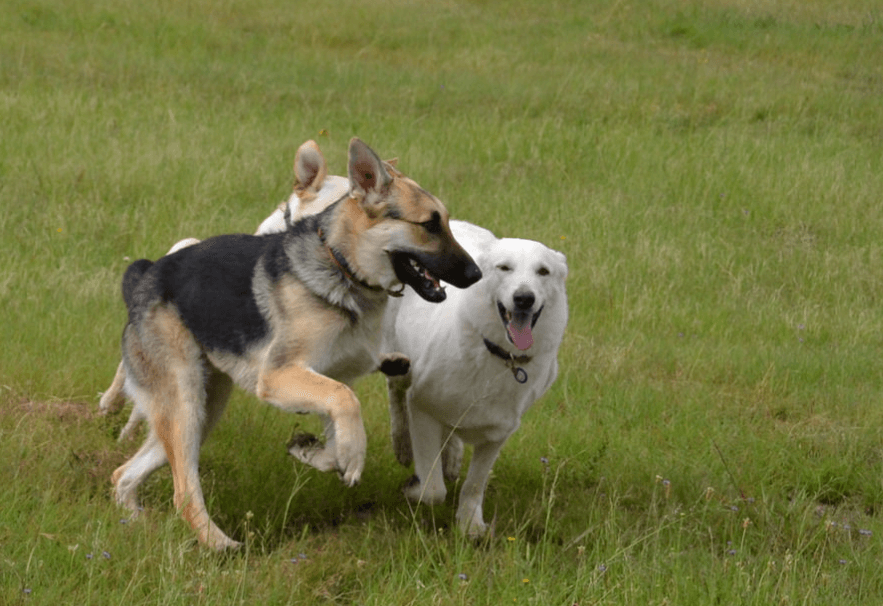The way you introduce dogs to each other is very important. Every dog is different. Here are some guidelines to follow to increase the chances of a successful meet. In order to prevent issues between your current and new dogs, there are some safety steps you should follow when first introducing the dogs.
- Introduce dogs in a neutral place. Do not bring the new dog into your home right away. Find a tree, park, or pet store to introduce
 your dogs. Find neutral grounds where one dog will not feel dominant. The car is not a neutral place to have both dogs meet for the first time.
your dogs. Find neutral grounds where one dog will not feel dominant. The car is not a neutral place to have both dogs meet for the first time. - If you introduce dogs together at the adoption location, have separate cages in the car or bring two cars.
- Make sure both dogs are on leashes, but keep them loose. A tight leash increases the possibility of confrontation.
- Start by walking single file to get them use to seeing each other.
- Then walk the dogs side by side with your own body in the middle. Avoid having the two dogs meet face to face as this is considered poor manners for dogs.
- Allow the dogs to sniff each other’s behinds. This is their way of getting to know each other.
- Watch their body language. Check to see if the tail has a loose wag and the movements are relaxed. If the tail and the ears are straight and the dog seems tense, pull them apart. Also, look at the mouth. Look at the teeth and listen for growling.
- Do not force any interaction between the dogs. It will happen naturally.
- As they sniff each other, make sure you tell them that they are doing a good job.
Now that you know how to introduce dogs, you should follow some safety tips in the home for the first few weeks. It is better to go slow through these stages. Taking your time now can mean a happier co-existence later.
- Keep an eye on the dogs as much as possible. Make sure they are interacting well.
- Clean up after your dogs. Toys can cause problems. If your dog plays with toys, put them away after use to prevent arguments over the toys.
- Give the dogs their own water and food bowls.
- When you are not home, keep the dogs in separate areas or crate the new dog in an area where your current dog cannot access.
- Allow the new dog to explore the home without the old dog present.
